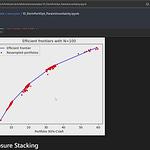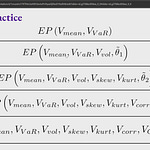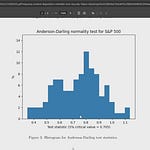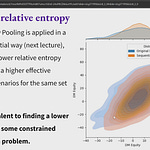The Portfolio Construction and Risk Management book1 gives a thorough presentation of the next generation investment framework2.
The investment framework is centered around fully general Monte Carlo distributions, Sequential Entropy Pooling3, and Conditional Value-at-Risk (CVaR) optimization4.
The book has accompanying Python code5, which allows you to explore basic case studies. It is an integral part of studying the book.
How to study the new methods
My best advice is to study the next generation investment framework from a strictly logical perspective. If you do that, you will quickly see that the methods are strictly better than the current standard.
The main reason that the investment industry is still stuck with mean-variance is academic and commercial vested interests.
There are so many articles, books, courses, and software built on mean-variance that many people have an incentive to maintain the status quo.
Some of these people even proactively try to limit your knowledge of new and better methods.
However, if you really care about improving your risk-adjusted return, you must use the best tools that are known to you. This is what the best investment managers do.
You cannot expect to outperform the market using the tools that are easily accessible to mom-and-pop investors.
If you do not believe me, check out Jim Simons’ perspectives in the Note below.
Portfolio Construction and Risk Management Book post: https://antonvorobets.substack.com/p/pcrm-book
Anton Vorobets, Next Generation Investment Analysis @ The London Quant Club YouTube video
Sequential Entropy Pooling Heuristics SSRN article: https://ssrn.com/abstract=3936392
Variance for Intuition, CVaR for Optimization SSRN article: https://ssrn.com/abstract=4034316
pcrm-book GitHub repository: https://github.com/fortitudo-tech/pcrm-book










